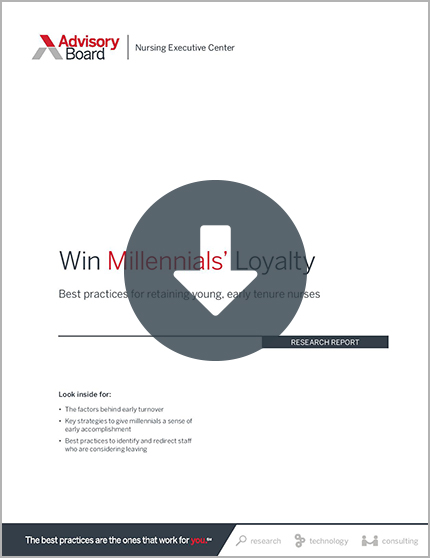Auto logout in seconds.
Continue LogoutDespite the worsening U.S. nursing shortage, nursing schools are rejecting thousands of qualified applicants each year because they can't accommodate more students, Parija Kavilanz writes for CNN Money.
May 17 webcon: How to combat nurse burnout—in a nursing shortage
The American Nurses Association estimates that the United States will need to train more than a million new nurses by 2022 to care for aging baby boomers and replace the wave of retiring nurses.
But in 2017, undergraduate nursing programs rejected more than 56,000 applicants, Kavilanz writes. Some of those applicants "graduated high school top of their class with a 3.5 GPA or higher," according to Robert Rosseter, spokesperson for the American Association of Colleges of Nursing. Nursing programs in community colleges and graduate programs are also turning away large numbers of potential students, Kavilanz writes.
More people want to become nurses, but schools can't keep up
One factor contributing to the high rejection rates, Kavilanz writes, is the growing interest by young adults in pursuing nursing, which generally offers a livable entry-level salary, schedule flexibility, and growth opportunities.
Despite this growing interest, nursing schools are struggling to hire qualified teachers, Kavilanz writes, as many nurses choose to remain in the field—where pay is higher—rather than teach. According to Rosseter, "the annual national faculty vacancy rate in nursing programs is over 7%," which translates to about "two teachers per nursing school, or a shortage of 1,565 teachers."
Without more teachers, nursing schools have been forced to downsize their classes. Mott Community College in Michigan reduced its bi-annual admissions from 80 to 64 students, in part due to a decision by the Michigan Board of Nursing to reduce the student-to-teacher ratio for clinical training.
Jane Kirschling, dean of the University of Maryland School of Nursing in Baltimore, said her school made similar adjustments, downsizing from a ratio of eight to 10 students per teacher to six.
The consequence, Kavilanz writes, is an increase in competition for available slots. Kirschling said the University of Maryland's nursing school averages 200 applications for 55 spots in each admission cycle.
How schools are addressing the shortage
Some schools, including Anne Arundel Community College (AACC) in Maryland, have embraced alternative formats to increase the number of nurses they can train. AACC offers an accelerated nursing program that allows paramedics and veterans to start the program in its second year. Similarly, Mott Community College has teamed up with the University of Michigan on a 16-month undergraduate program that helps veterans with medical experience transition into a nursing career.
According to Rebecca Myszenski, the dean of the division of health sciences at Mott Community College, "You have to address the nursing shortage by thinking outside of the box" (Kavilanz, CNN Money, 4/30).
May 17 webcon: How to combat nurse burnout—in a nursing shortage
Join this session to learn the main drivers of physician and nurse burnout, and how organizations can effectively combat it.
Don't miss out on the latest Advisory Board insights
Create your free account to access 1 resource, including the latest research and webinars.
Want access without creating an account?
You have 1 free members-only resource remaining this month.
1 free members-only resources remaining
1 free members-only resources remaining
You've reached your limit of free insights
Become a member to access all of Advisory Board's resources, events, and experts
Never miss out on the latest innovative health care content tailored to you.
Benefits include:
You've reached your limit of free insights
Become a member to access all of Advisory Board's resources, events, and experts
Never miss out on the latest innovative health care content tailored to you.
Benefits include:
This content is available through your Curated Research partnership with Advisory Board. Click on ‘view this resource’ to read the full piece
Email ask@advisory.com to learn more
Click on ‘Become a Member’ to learn about the benefits of a Full-Access partnership with Advisory Board
Never miss out on the latest innovative health care content tailored to you.
Benefits Include:
This is for members only. Learn more.
Click on ‘Become a Member’ to learn about the benefits of a Full-Access partnership with Advisory Board
Never miss out on the latest innovative health care content tailored to you.

